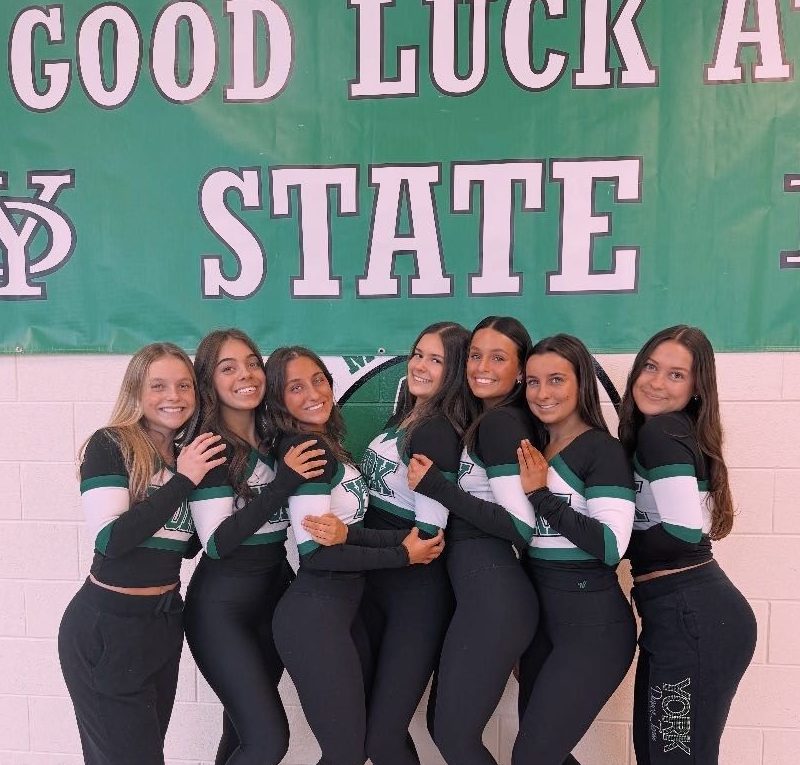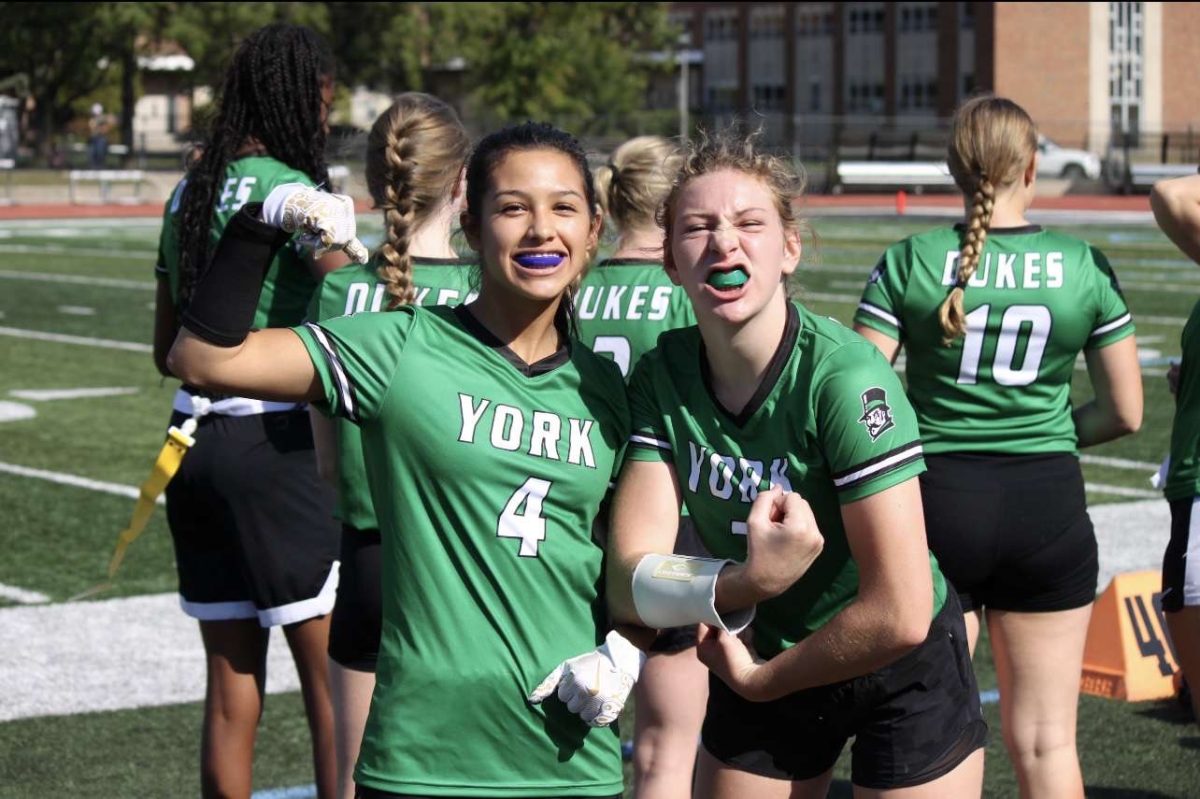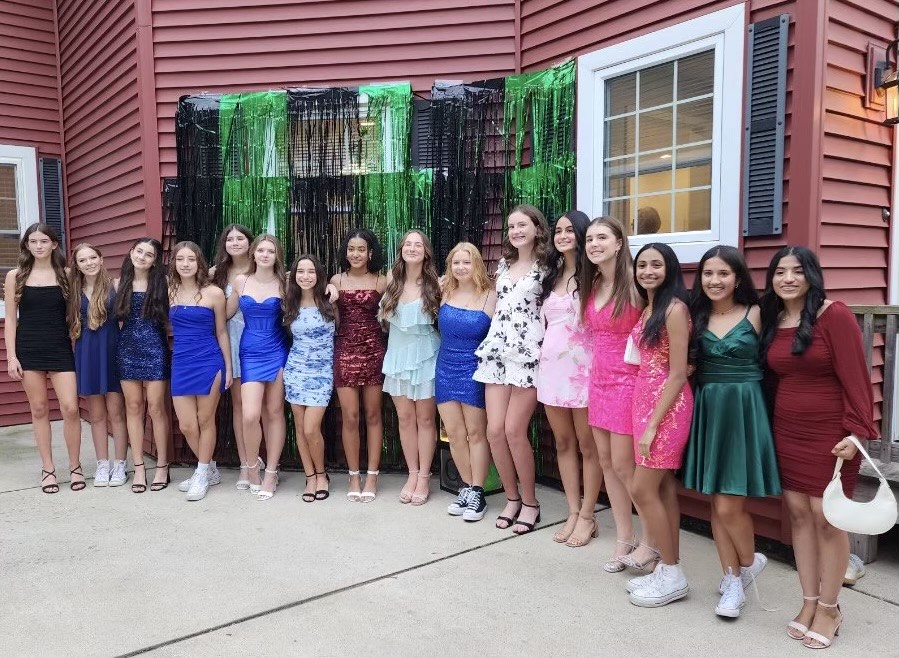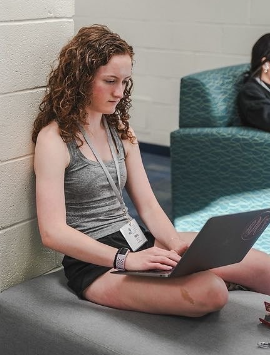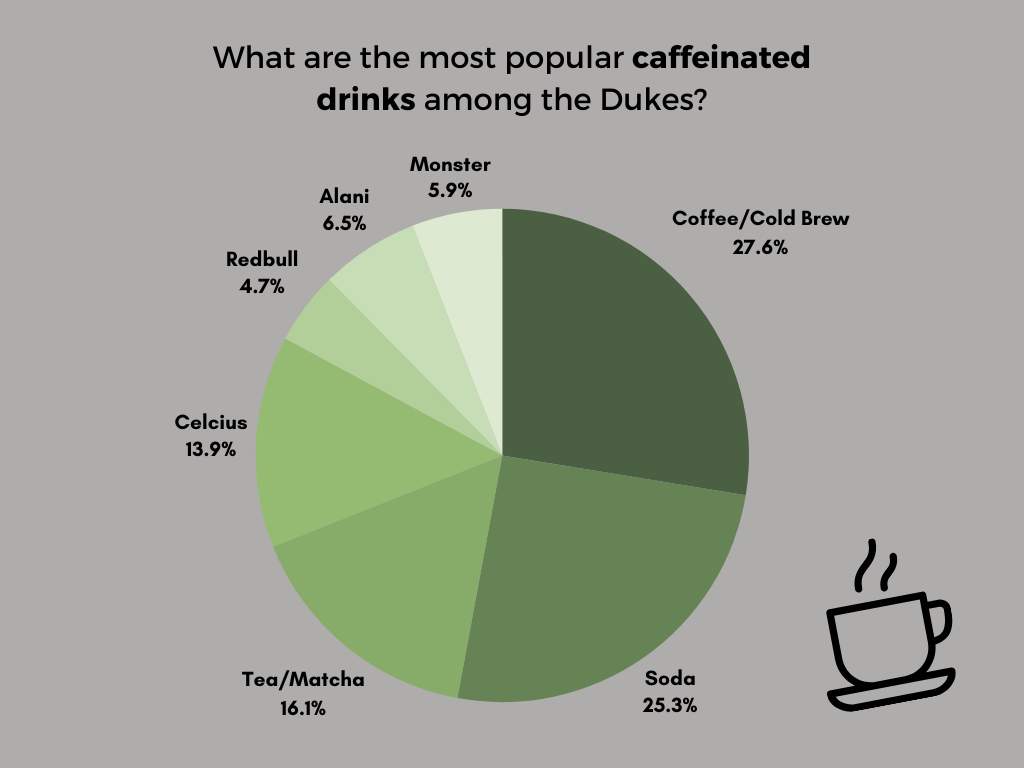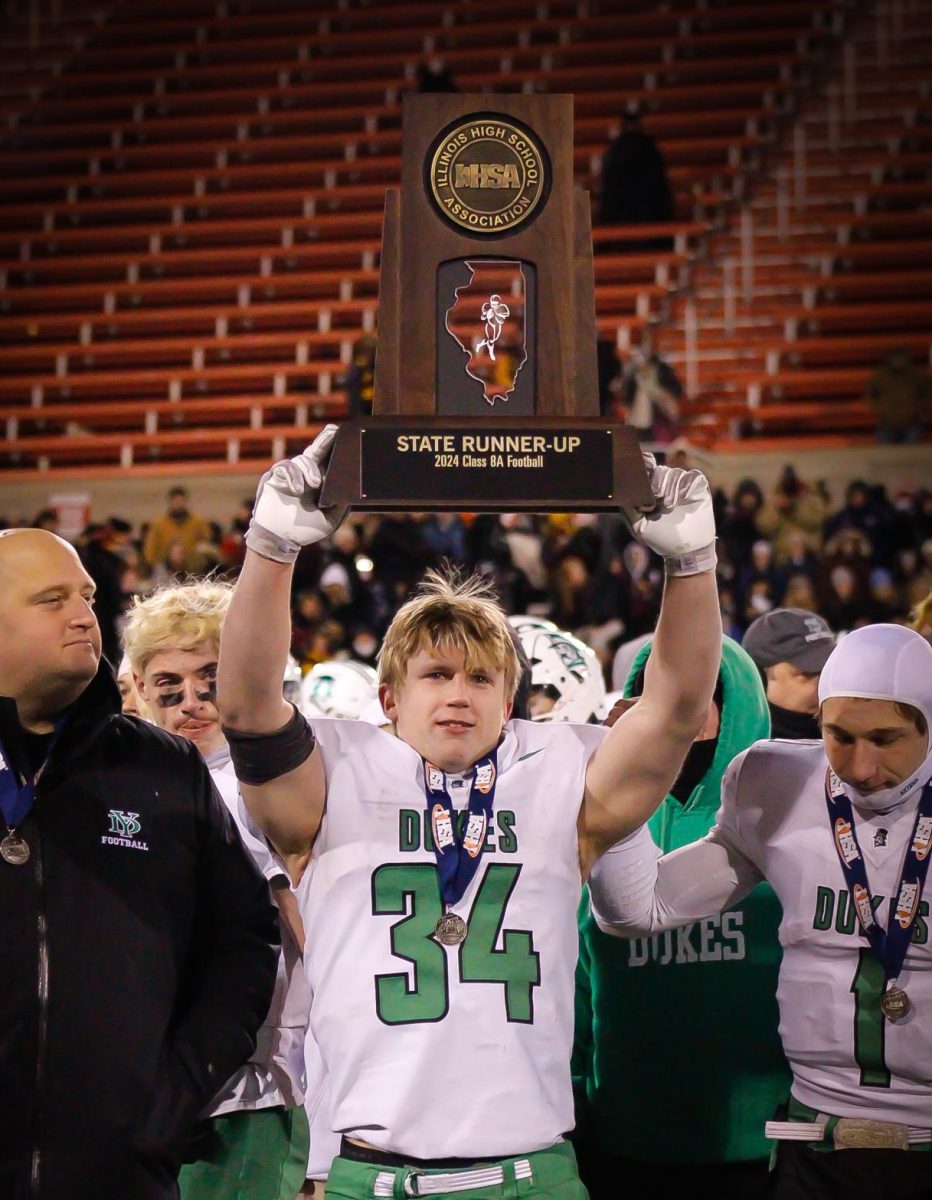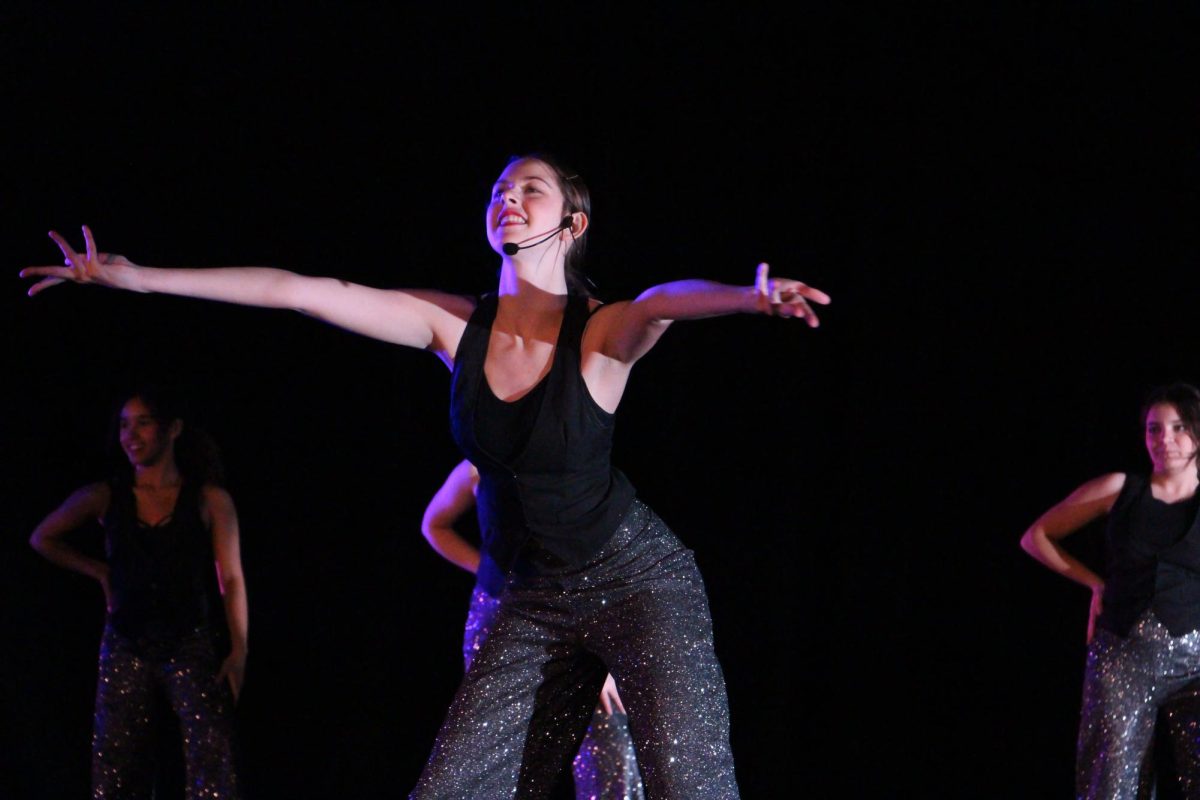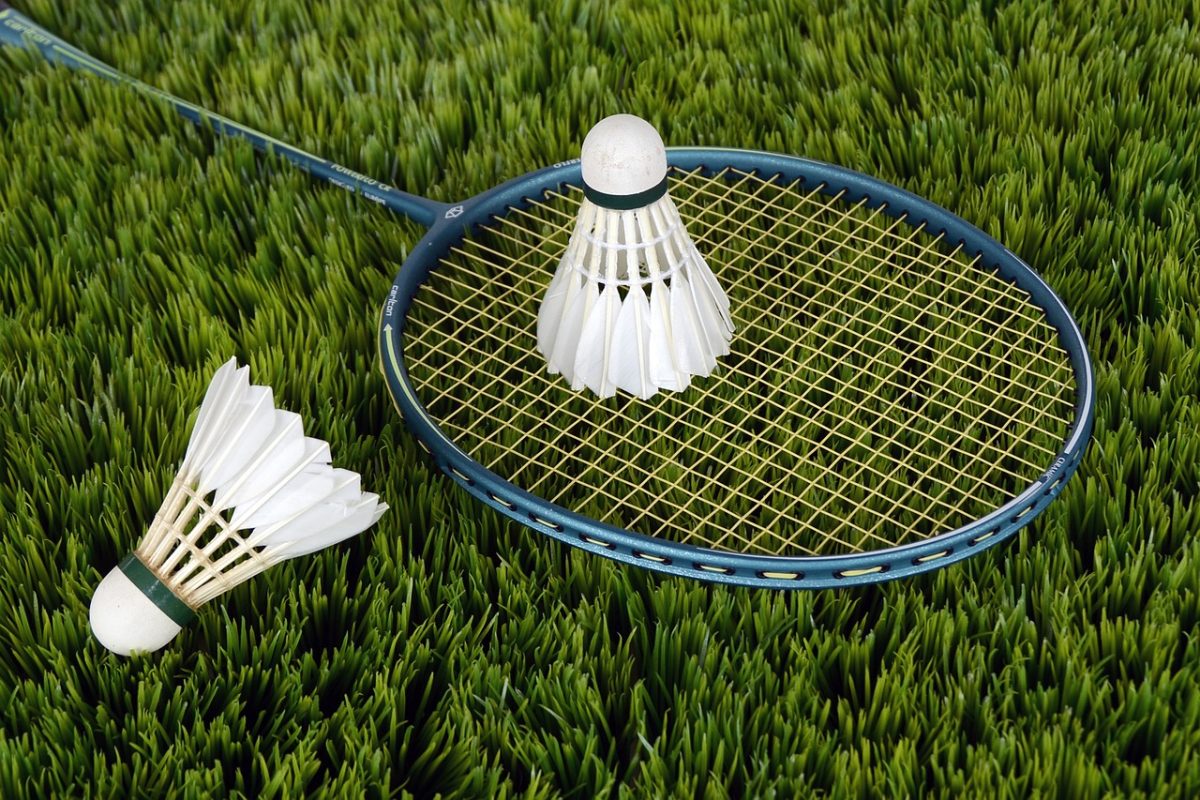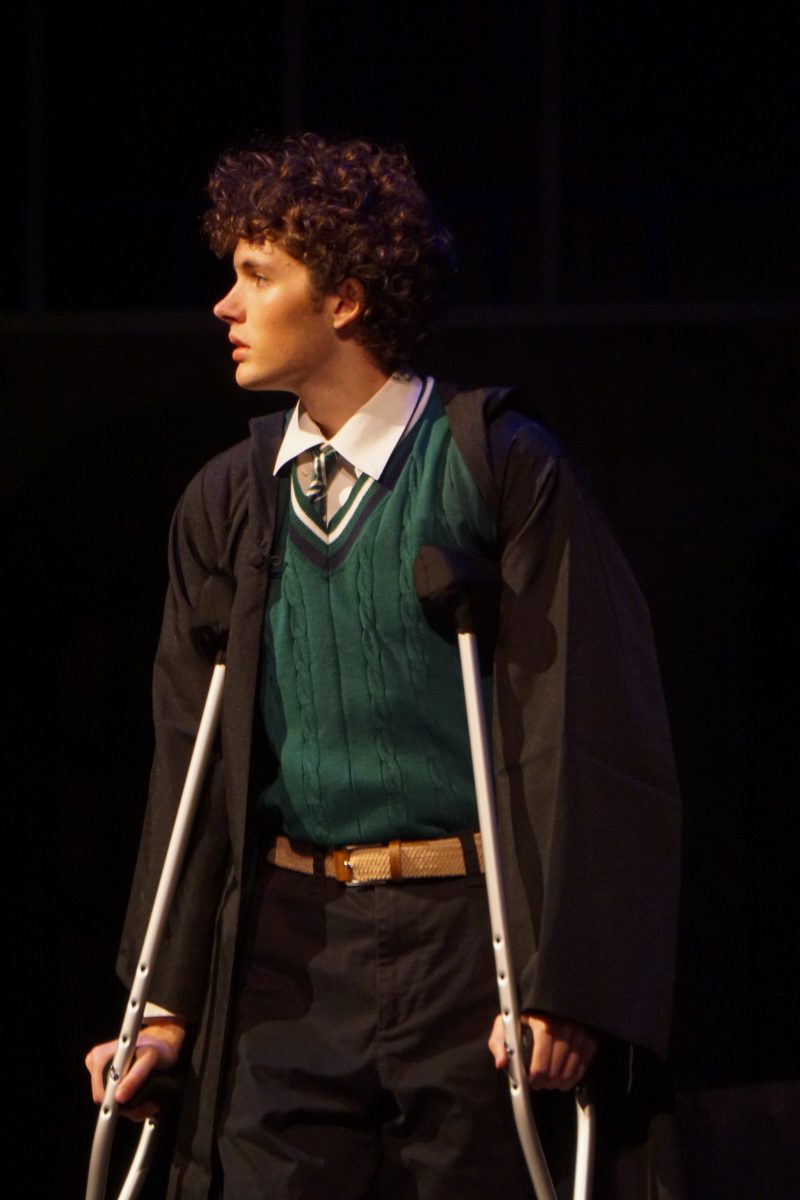Between its performance of the fight song before football games and their halftime show during basketball season, York Competitive Dance team, also known as poms, plays a large role in the school culture. However, it is the culture within the program that has created a legacy across the local dance community.
“I feel like people still think we’re just the pom-pom-girls that do their fun little dance at the football games,” Teagan Barnes, assistant dance coach, said. “I dont think a lot of people really even know what dance is, to be honest, just how intense it is, and how creative it is, and that it’s not just pom poms, football, fun time. There are a lot of other things in addition to that. I think the winter season gets lost on a lot of people.”
While the team has often been dismissed as nothing more than a spirit squad, coaches and

athletes are hoping that their seventh place state finish at the state competitions will grant the team the recognition it has long deserved.
“Yes, we are a spirit squad, but we have our own season,”Alyssa Ortiz, head coach, said. “I think that’s what people don’t know either, is that we do have our own competitive season. We do practice three days a week, we do have morning practices, they do work outs, they do all of this stuff outside of just being a support squad.”
Because the dance team operates as two distinct seasons, the shift between football and pep rallies in the fall, to intense competitions and training is one that changes the dynamic and culture of the team.
“It’s two different teams and the people are different. It’s a lot more work that goes into winter,” Eleni Karamitsos, junior, said, “Footballs a lot of work too, but it’s more fun because we are there to be spirited and support the other teams. When we are doing winter, we are the main team. We’re not cheering anyone else on, the focus is on us.”
Once the winter season starts, girls are held at a high standard in order to maintain constant progression throughout the season. While practicing for hours a week on a single dance is a concept that many girls have struggled to explain to their friends, the progression that they make throughout the competitive season is what makes the process so gratifying.
“I like to see where we started off compared to where we ended,” Barnes said. “If I find a video of the first day we did our dance and put it next to the last time we did our dance, that is the most rewarding thing. Knowing the things that we fixed helped them.”
Not only does this intensity change throughout the year as the program quickly transitions between seasons, but the program itself has evolved so much in the last decade. Both Barnes and Ortiz were a part of the competitive dance team when they attended York, and both have noticed an evolution in the program.
“I was on the team in 2013 through 2015, so it really wasn’t that long ago,” Barnes said. “Back then, we definitely were more about football and the pom poms. We did the winter season, but a lot of times the team consisted of only two or three of us that danced outside of poms. We made up the dance that we competed with, we had no budget for costumes, and our coach wasn’t a dancer. It was just a lot of people who liked to dance, but did not have the background.”
Contrastingly, both coaches agree that a transition from being predominantly a spirit squad, to becoming a competitive program, has taken place. Now, the team has made a point of prioritizing technical standards at all levels of the program.
“When I danced, me and another girl were the only ones that were studio trained, so it was hard to do choreography,” Ortiz said, “It was just the ‘fun’ thing to do, or the ‘cool’ thing to do back then, joining the poms team. Now it’s like, we want to compete and we want to win.”
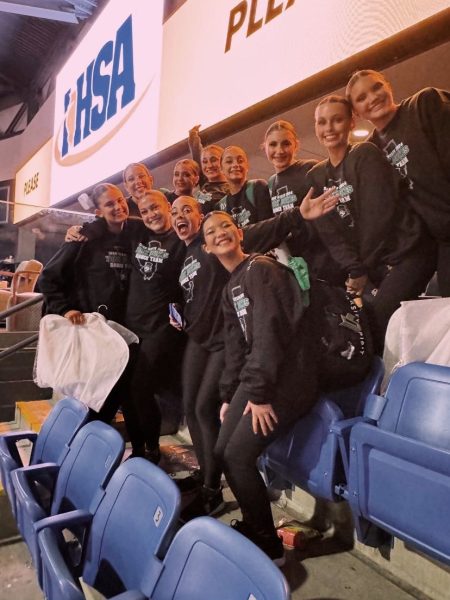
Photo courtesy of Eleni Karamitsos
Over the past few years, gradual shifts have happened as new girls join, and seniors leave. For example, this year, the team had significantly less seniors than in years past. With each shift in the team, comes a change in the program.
“In my opinion, this year was the biggest change in the team,” Claire Proud, senior, said. “The teams change a lot over the years, which I think is kind of cool because you get to meet different people and the dances are all different.”
Every year, a new team invokes new goals. Establishing new ways to hold the team accountable for new objectives, is a main focus for the team throughout the seasons.
“Our mentality changes every year based on the team that we have,” Ortiz said. “It switches based on what our goals are. This year we figured out that it works best for our team to have a weekly goal. We would sit down on Monday at the white boards, figure out our goals, and make sure that we are holding them accountable for these goals”
One of the ways that these goals have changed over the years is by prioritizing skills and setting high standards for the athletes. This shift in expectations is one of the reasons the team was so successful this year.
“For the winter season it really was just requirements that we sent out on a piece of paper, like you need to be able to do this skill or this many turns, and for the first time we really stuck to it,” Barnes said. “That’s kind of what made this year better than the last few. We pushed them all to get the skill so they could be there. We didn’t budge on it, which was hard for some people some times, but it made our dance overall a lot better and alot stronger, and it paid off.”
Increasing these standards throughout the years has caused each new team to be better than the last. Setting the bar higher and establishing stringer goals is how the team has garnished such a strong reputation in the dance community. The legacy that has grown over the years is evident in the way girls aspire to be a part of the team.
“Growing up, I danced at Deforest and it was kind of like a known thing that when you go to high school, you try out for the poms team,” Cece Wright, senior, said. “At most studios it’s like that, where poms are such a huge part of it.”
This phenomenon has functioned off of the notion that success breeds success. Members of the poms team who were once on the receiving end of this inadvertent recruitment, are now playing that big sister role at their studios.
“The older kids have an influence on the younger kids at their studio,” Ortiz said, “If they are talking positively about the program, those eighth graders are going to want to try out for us.”
The dynasty that has formed by word of mouth throughout the years has also increased with the team’s success. The York team is known for being a sectional level team, and their acclaimed status in the dance community is what entices people to be a part of the program.
“It’s great having those kids that have created this legacy,” Ortiz said, “they are the ones who are pushing themselves, they are the ones who are creating standards, and making it fun to others.”
Not only has the team built a dynasty off of its competitive success, but the fun atmosphere and comradery among teammates has become the pedestal for the team’s growth.
“You build a really deep bond and you’re with them during really awful practices and really great practices,” Wright said. “You’re growing together. It’s nice to see the season progress. You start at like a low spot and the you kind of make your way up as the year progresses.”
Wright explains how the progress being made and bonds being formed have made this team so special. While Wright has been on the team for all four years of highschool, her final season looked different than she had expected. Following an ACL surgery, Wright had to sit out of the last three competitions, including the state series.
“I never felt distant from the team,” Wright said, “I was always there at the warm up gyms and at competitions. It was hard watching at state and not being able to dance, but life happens.”
This idea of rolling with the punches is just one of the many life skills that the dance team tries to integrate into their coaching. While the team dynamic has changed so much over the years, the program has always upheld the goal of establishing the life long skill of tenacity.
“In the form of teaching them a dance skill they learn things beyond that,” Barnes said, “Yes, at this moment it’s about needing to be able to do this turn on time, but I feel like they can apply that to all of life. You have to do what’s best for your team, and there’s a lot of things that go into dance and into life.”
Both coaches explained how self advocacy, confidence, and communication are also key components of their teaching. One way they encourage the girls to take on is by appointing team leaders.
“Throughout the years they pick different captains, they have senior captains and junior co captains, so it’s nice to see the people who can step up,” Proud siad. “There’s different [captains] for fall season and competitive season, so you get to work together with everyone and form good bonds”
These life skills have taught team members the importance of teamwork. After a tough season last year, having not advanced to the second day of state, the girls knew that they had to apply these skills of perseverance in order to make this their comeback season.
“I think this season just showed me that I’m really proud of my team and how far we have come since last year,” Karamitsos said, “The way we ended last season was on such a negative note, and I’m glad that we are ending it on such a positive note this year. I feel like our coaches helped us with that, we helped each other with that, and we have all made it such a positive environment.”
Despite the constant evolution and change throughout the program, the ambition to improve and work together has always been constant.
“I have loved dancing my whole life,” Proud said. “With dance being through the school, it was really nice knowing that I had connections like that with other people that I might have not talked to if I hadn’t done that.”


